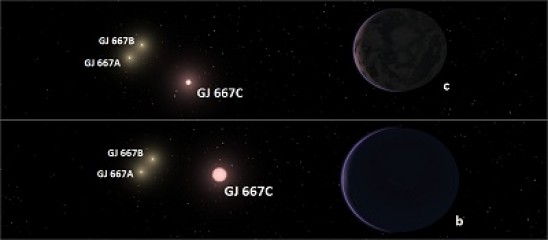Scientists Discover New Super-Earth Within Habitable Zone of Nearby Star
An international team of scientists has discovered a new super-Earth orbiting a star only 22 light years away. The orbiting planet has a an orbital period of around 28 days and a minimum mass 4.5 times the size of Earth. Most excitingly, the planet orbits its star within a zone where temperatures are within the right range for water to exist, neither too hot nor too cold, otherwise known as the habitable zone.
The new planet was found to receive 90% of the light from its star that Earth receives from the Sun, but most of the incoming light is infrared, so more of it will be absorbed by the planet, which means that the new planet is expected to absorb roughly the same amount of energy from its star as Earth does from the Sun.
The host star has a different composition than our Sun, with a lower make-up of elements heavier than helium, like carbon, iron, and silicon. The team, led by Guillem Anglada-Escudé and Paul Butler of the Carnegie Institution for Science and also consisting of Steven Vogt and Eugenio Rivera of UC Santa Cruz, found the planet by detecting and measuring the star’s wobbles cause by the gravitational pull of a planet. A fairly standard technique that one will come across often when reading up on newly discovered planets.
Anglada-Escudé states that this new planet is the best candidate to support liquid water, and thus, potentially, life. The team also thinks the system contains a gas giant, as well as another super-Earth with an orbital period of 75 days, but require further study for confirmation.
The host star, dubbed GJ 667C, is an M class dwarf star and is part of a triple star system, which contains the other two stars, GJ 667A and B, which are a pair of orange K dwarf stars. Vogt states that the star was an unlikely candidate to host other planets, due to its metal-poor composition, and theorizes that if this star can host planets, other unlikely stars could as well, which in turn could make the amount of hosted planets greater than expected.
(via PhysOrg)
- Kepler’s first ever exoplanet found within habitable zone
- One-third of sun-like stars should have Earth-like planet in habitable zone
- NASA discovers first Earth-sized planets out of our Solar System
Have a tip we should know? [email protected]
